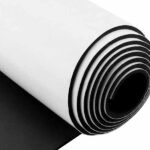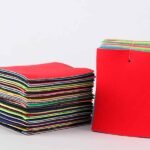Elbow pain can strike at the most inconvenient times—whether you’re cranking out curls in the gym or hauling boxes in the garage. Neoprene elbow sleeves swoop in like trusty sidekicks, offering warmth, compression, and joint support. But what exactly makes them so effective, and when should you slip one on?
Neoprene elbow sleeves are elastic supports made from closed-cell neoprene that deliver compression, insulation, and joint stability. They reduce pain, enhance circulation, and retain heat to speed recovery. Ideal for injury prevention, chronic conditions, and workouts, they marry support with flexibility in a simple sleeve design.
Imagine finishing a brutal tennis match only to feel that familiar twinge on the outside of your elbow. You shrug it off, but the ache lingers next day, slowing every arm movement. This is where neoprene sleeves shine—trapping heat and providing just the right squeeze to chase pain away. Stick around as we dive deep into their purpose, types, care, and how to pick the perfect pair—so you never have to miss a rep or a rally again.
What Is a Neoprene Elbow Sleeve?

A neoprene elbow sleeve is a tubular support made from synthetic rubber (neoprene) that stretches over the elbow. Its snug fit delivers compression, warmth, and stability, easing discomfort and reducing swelling in the joint and surrounding tissues.
-
Definition & Materials:
- Neoprene Composition: A closed-cell foam of chloroprene rubber, typically 60–80% neoprene content.
- Inner/Outer Liners: Often laminated with nylon or spandex for comfort and durability.
-
Basic Construction:
- Seam Types: Flatlock seams for comfort; glued or overlock for strength.
- Ergonomic Cut: Contours to elbow anatomy for full range of motion.
-
Sizing & Fit Considerations:
- Elastic Recovery: Neoprene recovers 90–95% after stretch.
- Fit Factors: Must be snug but not restrictive—target 10–20 mmHg compression.
-
Table: Neoprene Composition vs. Performance
Neoprene % Thickness Range Insulation (R-value) Common Use 60–70% 1–3 mm 0.5–0.7 Light support, fashion 70–80% 3–5 mm 0.7–1.0 General sports, rehab
What Is the Primary Purpose of Neoprene Elbow Sleeves?

The primary purpose of neoprene elbow sleeves is to provide compression for joint stabilization and thermal insulation to preserve body heat. These combined effects relieve pain, reduce swelling, and accelerate healing in both acute injuries and chronic conditions.
-
Compression & Joint Stabilization:
- Graduated Pressure: 15–25 mmHg to enhance proprioception and reduce micro-movements that aggravate injury.
- Swelling Control: Compression limits fluid buildup in the joint, cutting down inflammation.
-
Thermal Insulation & Circulation:
- Heat Retention: Raises local temperature by 1–2 °C, boosting blood flow and nutrient delivery.
- Circulatory Benefits: Improved microcirculation speeds waste removal from damaged tissue.
-
Pain Management & Recovery:
- Endorphin Release: Warmth triggers natural painkillers.
- Rehabilitation Aid: Supports light exercise without overstraining.
-
Example:
A clinical study found participants wearing 3 mm neoprene sleeves showed 30% reduction in elbow pain during weighted movements compared to no support.
When Should You Wear a Neoprene Elbow Sleeve? Conditions & Activities
You should wear a neoprene elbow sleeve during physical activity that stresses the elbow (tennis, weightlifting), when managing chronic conditions (tendonitis, arthritis), or post-injury recovery. They’re also useful in cold environments to maintain joint warmth and flexibility.
-
Injury Prevention During Sports
- Tennis Elbow & Golfer’s Elbow: Lateral vs. medial epicondylitis benefit from compression to reduce tendon strain.
- Weightlifting & CrossFit: Sleeves prevent hyperextension and provide support during heavy presses.
-
Therapeutic Uses for Chronic Conditions
- Tendonitis: Continuous warmth alleviates tendon stiffness.
- Arthritis: Compression soothes aching joints; neoprene’s mild pressure mimics gentle massage.
-
Post-Injury Rehabilitation
- Sprains & Strains: Light sleeves (1–3 mm) for initial healing.
- Post-Surgical Support: 3–5 mm sleeves stabilize without bulky braces.
-
Cold-Weather Work & Hobbies
- Outdoor Laborers: Construction, gardening in cool climates—sleeves maintain joint warmth.
- Recreational Activities: Skiing, cycling in low temps benefit from insulating sleeves.
-
Table: Recommended Sleeve Use by Activity
Activity/Condition Recommended Thickness Key Benefit Daily Wear & Prevention 1–2 mm Light support, flexibility Sports & Fitness 3–5 mm Compression, warmth, stability Rehab & Post-Injury 5–7 mm Enhanced heat, reduced strain Cold Environments 5–7 mm Superior insulation
How Do Neoprene Elbow Sleeves Provide Support and Compression?

Neoprene sleeves provide support through a snug, anatomical design that wraps key tendon and muscle groups. Graduated compression zones apply targeted pressure, improving joint stability and proprioception, while allowing full elbow flexion for natural movement.
-
Anatomical Design & Fit
- Contoured Panels: Align with biceps, triceps, and forearm to prevent sleeve migration.
- Patella-Style Cuts: Open-patella style around the olecranon (elbow point) enhances comfort.
-
Graduated Compression Zones
- Pressure Mapping: 25 mmHg at mid-elbow tapering to 15 mmHg at edges.
- Muscle Activation: Mild pressure stimulates muscle spindles for better neuromuscular control.
-
Flexibility vs. Stability
- Stretch Ratio: Neoprene stretches 200–300% across grain, 100–150% along grain—balancing hold and movement.
- Joint Support: Compression slows abrupt motions, reducing risk of overextension.
-
Example Application:
Powerlifters report a 20% increase in perceived stability during bench presses when wearing 3 mm neoprene sleeves.
Are There Different Types of Neoprene Used for Elbow Sleeves?
Yes—sleeves vary by neoprene thickness (1–7 mm) and cell structure (open-cell vs. closed-cell). Thinner neoprene offers flexibility, while thicker neoprene provides superior insulation. Closed-cell neoprene resists water absorption, making it ideal for thermal retention.
Thickness Variations & Use Cases
| Thickness (mm) | Compression Level (mmHg) | Typical Use |
|---|---|---|
| 1–2 mm | 10–15 | Mild support, athletic precedent |
| 3–5 mm | 15–25 | General sports, rehab |
| 5–7 mm | 25–35 | Cold-weather, heavy rehab |
Open-Cell vs. Closed-Cell Neoprene
| Feature | Open-Cell | Closed-Cell |
|---|---|---|
| Insulation | Very high (traps air & heat) | High, but less than open-cell |
| Water Absorption | Absorbs moisture (stretchy feel) | Waterproof, no absorption |
| Breathability | Moderate | Low |
| Durability | Softer, can tear more easily | Tougher, resilient |
Surface Laminations & Coatings
- Nylon/Spandex Laminates: Enhance comfort and moisture-wicking.
- Silicone Grip Prints: Prevent sleeve slippage.
- PU Coatings: Add splash resistance and wipe-clean surfaces.
How Do You Choose the Right Neoprene Elbow Sleeve?

Pick a sleeve based on activity, desired compression, and fit. Measure elbow circumference 5 cm above and below the joint. Decide on thickness (1–7 mm), open vs. closed cell, and extra features like straps or gel pads for targeted support.
Sizing & Measurement
| Size | Circumference Above Elbow (cm) | Circumference Below Elbow (cm) |
|---|---|---|
| Small | 23–26 | 22–25 |
| Medium | 26–29 | 25–28 |
| Large | 29–32 | 28–31 |
| XL | 32–35 | 31–34 |
- Measure snugly—too loose, and support wanes; too tight, and circulation suffers.
Feature Comparison
- Straps vs. Seamless: Velcro straps allow adjustable compression; seamless styles provide uniform pressure.
- Gel Pads: Offer joint cushioning against impact and pressure points.
- Perforation: Laser-cut holes improve breathability.
Activity-Matched Recommendations
- Weightlifting/CrossFit: 3–5 mm with straps for stability.
- Tennis/Golfer’s Elbow: 1–3 mm open-cell for flexibility.
- Post-Surgery Rehab: 5–7 mm closed-cell for insulation and gentle compression.
How Should You Care for and Maintain Neoprene Elbow Sleeves?
Hand wash sleeves in cool water with mild soap, rinse thoroughly, and air dry away from direct sunlight. Inspect monthly for tears or seam separation. Replace sleeves every 6–12 months or at first sign of material breakdown.
Cleaning & Drying Protocol
| Task | Frequency | Method |
|---|---|---|
| Light Rinse | After each use | Wipe inside/outside with damp cloth |
| Deep Clean | Weekly | Hand wash in lukewarm, soapy water |
| Drying | After cleaning | Air dry flat, away from heat/UV |
- Avoid: Machine washing, tumble drying, bleach, and harsh detergents.
Inspection & Replacement
-
Monthly Checks: Look for frayed edges, separation of liners, loss of elasticity.
-
Service Life:
- Recreational use: 6–12 months
- Daily athletic/industrial use: 3–6 months
-
Replacement Trigger: Any seam failure or >15% loss in compression.
Do Neoprene Elbow Sleeves Offer Any Additional Features?
Many sleeves include moisture-wicking inner linings, antimicrobial treatments to prevent odor, and custom branding options. Szoneier offers color customization, logo printing, and reflective strips for enhanced safety and brand visibility.
Moisture Management & Comfort
- Inner Liners: Nylon or polyester fleece pulls sweat away.
- Antimicrobial Coatings: Silver-ion or bamboo-charcoal treatments to combat bacteria.
Custom Branding & Aesthetic Options
| Feature | Benefit | Typical MOQ |
|---|---|---|
| Logo Printing | Brand visibility on sleeves | 500 pieces |
| Color Matching | Consistent brand palette | 200 meters |
| Reflective Accents | Night-time safety | 300 pieces |
Specialty Treatments
- Flame-Retardant Finishes: Meets NFPA 701 for industrial applications.
- UV-Stabilizers: Extend fabric life in outdoor exposures.
- Textured Grips: Silicone patterns for non-slip performance.
Ready to Order Your Custom Neoprene Elbow Sleeves?
Whether you need 1 mm sleeves for light support or 7 mm insulating sleeves for cold-weather rehab, Szoneier has you covered. We’re an R&D-driven neoprene manufacturer with years of experience in custom designs, free samples, and flexible MOQs.
Contact us today to get a personalized quote and free design consultation—because every elbow deserves the best support.











